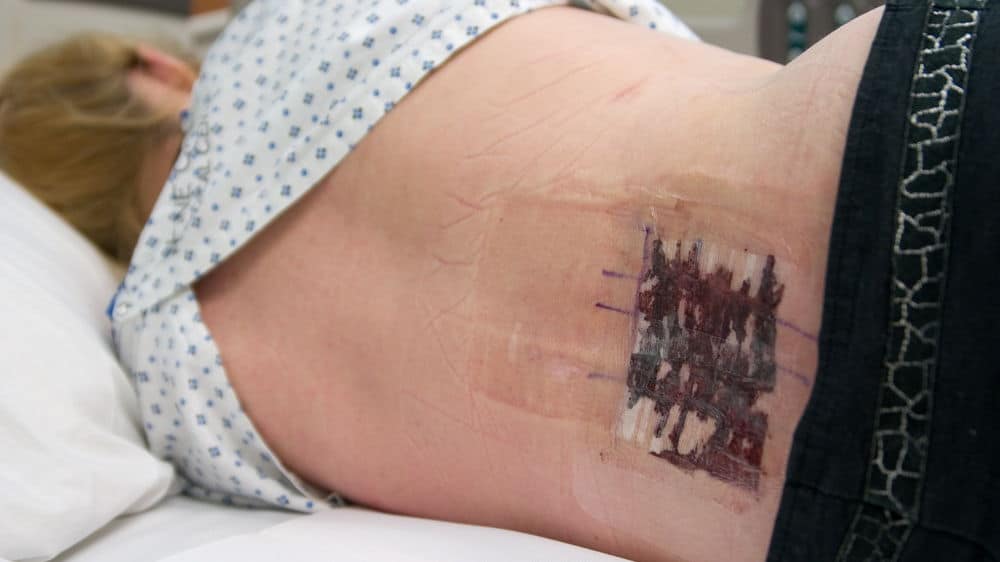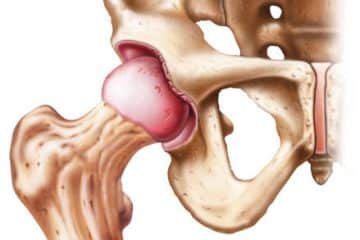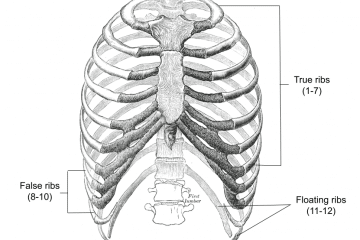Lower back pain refers to a common, painful condition affecting the lower portion of the spine.
Lower back pain is caused by injury to a muscle (strain) or ligament (sprain). Common causes include improper lifting, poor posture, lack of regular exercise, a fracture, a ruptured disc or arthritis.
Often, the only symptom is pain in the lower back.
Most lower back pain goes away on its own in two to four weeks. Physiotherapy and pain relievers can help. A few cases may require surgery.
What causes lower back pain?
There are varieties of causes of lower back pain. Most common causes include:
Strains
The muscles and ligaments in the back can stretch or tear due to excess activity. Symptoms include pain and stiffness in the lower back, as well as muscle spasms. Rest and physical therapy are remedies for these symptoms.
Disc Injury
The discs in the back are prone to injury. This risk increases with age. The outside of the disc can tear or herniate.
A herniated disc, which is also known as a slipped or ruptured disc, occurs when the cartilage surrounding the disc pushes against the spinal cord or nerve roots. The cushion that sits between the spinal vertebrae extends outside its normal position.
This can result in compression of the nerve root as it exits from the spinal cord and through the vertebral bones. Disc injury usually occurs suddenly after lifting something or twisting the back. Unlike a back strain, pain from a disc injury usually lasts for more than 72 hours.
Spinal Stenosis
This refers to a narrowing of the spinal canal.
Spinal stenosis can put pressure on the spinal cord and the nerves within the spine. It commonly occurs in the neck and lower back. The condition is often caused by age-related wear and tear.
Other causes include: scoliosis, lordosis, fibromyalgia, and osteoarthritis.
Read More: Spinal Stenosis Surgery
Lower Back Pain Treatments
The first line of treatment for lower back pain is conservative methods as in physical therapy, heat and anti-inflammatory medications. When these fail, lower back pain surgery maybe indicted.
Types of Lower Back Surgery

Different types of back surgery include:
Diskectomy
This involves removal of the herniated portion of a disk to relieve irritation and inflammation of a nerve. Diskectomy typically involves full or partial removal of the back portion of a vertebra (lamina) to access the ruptured disk.
Laminectomy
This procedure involves the removal of the bone overlying the spinal canal. It enlarges the spinal canal and is performed to relieve nerve pressure caused by spinal stenosis.
Fusion
Spinal fusion permanently connects two or more bones in your spine. It can relieve pain by adding stability to a spinal fracture. It is occasionally used to eliminate painful motion between vertebrae that can result from a degenerated or injured disk.
Artificial disks
Implanted artificial disks are a treatment alternative to spinal fusion for painful movement between two vertebrae due to a degenerated or injured disk. But these relatively new devices aren’t an option for most people.
Lower Back Surgery Risks
Like all surgical procedures, there are risks of complications with lower back surgery. These include:
Infection – One of the most common complications is an infection where the incision was made. It can usually be treated successfully with antibiotics.
Bleeding – There maybe excessive bleeding as a result of lower back surgery.
Dural tear – There’s a risk of a dural tear occurring during all types of lower back surgery. The dura is a watertight sac of tissue that covers the spinal cord and spinal nerves.
If the tear isn’t identified and repaired at the time of surgery, it can lead to cerebrospinal fluid (CSF) leaking after the procedure.
Leakage of cerebrospinal fluid – During lower back surgery, there’s a risk of accidental damage to the lining of the nerve, which can lead to the leakage of cerebrospinal fluid (CSF).
Nerve injury and paralysis – Although rare, some patients who have lower back surgery will develop new numbness or weakness in one or both legs as a result of the operation.
Lower Back Surgery Cost
The total cost for lower back surgery depends on a lot of factors such as the anesthetic fee, private hospital fee, private operating facility fee and type of surgery.
Average per-surgery costs for various types of lower back surgeries are as follows:
Anterior cervical fusion: $44,000
Cervical fusion: $19,850
Decompression surgery: $24,000
Lumbar laminectomy: $18,000
Lumbar spinal fusion: $34,500
Since each patient’s insurance coverage is different, it’s important to understand your plan in order to know how much, if any, of the surgery will be covered. For example, some patients may have high deductibles where insurance will cover only a small portion of the associated costs. On the other hand, some patients may have 80/20 plans where the insurance may cover a significant amount and the patient is only responsible for their copay.
Lower Back Surgery Recovery
After a lower back surgery, it takes 3 to 12 months to return to most normal daily activities, and the success rate in terms of pain relief is probably between 70% and 90%, depending on the condition the spine surgery is treating. Soon a total disc replacement – or artificial disc surgery – may also be available as a treatment option for patients with certain types of conditions that cause ongoing low back pain.
For patients who are 55 or older, symptoms of back pain and/or leg pain are much more likely to be due to degenerative arthritis (osteoarthritis) that might result in a narrowing of the canal (spinal stenosis) and/or instability of one vertebral segment.
Generally, the low back pain and/or leg pain created by these back conditions will get worse with walking and will improve with sitting. Often, the symptoms will have been present for years, and may get worse at a very slow rate.
Once a patient gets to the point that he or she can no longer adequately function because of the low back pain, lumbar decompression with or without spine fusion may be recommended to help increase the individual’s activity tolerance and quality of life.
Read More: Post-operative Exercises


